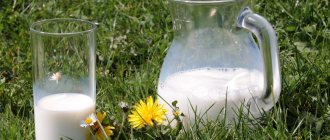Cases of poisoning with substandard products, medicines, alcohol, poisonous mushrooms and chemicals can occur in every family or group. The first thing to do in case of poisoning is to seek medical help.
If it cannot be obtained immediately, first aid to a person with signs of poisoning is provided by close people. They must know what to do in case of poisoning in order to reduce its consequences for the life and health of the affected person.
First aid
At home, gastric lavage becomes a necessary component of emergency care for the victim, especially if poisoning is not accompanied by vomiting. What needs to be done?
- To get rid of the stomach contents, you should drink 3-5 glasses of boiled water and induce vomiting.
- Make a cleansing enema using lightly salted water (1 tablespoon per liter of water) or a weak solution of potassium permanganate.
- To avoid dehydration of the body, drink a decoction of chamomile, rosehip, green tea or mineral water.
Let's look at how to do gastric lavage at home.
Gastric lavage in children
It is recommended that emergency gastric lavage in children be entrusted to medical personnel and carried out in a hospital.
There are some features of such a procedure. Peculiarities:
- The diameter of the probe depends on the age of the child. It is unacceptable to use thick probes in children.
- To cleanse children, they require more reliable fixation, so it will be quite difficult to carry out the procedure alone.
- It is necessary to carefully calculate the volume of liquid that is injected inside. It depends on the age of the baby.
- It is recommended to carefully monitor the amount of solution introduced and output to avoid excess water entering the intestines.
We recommend: Abdominal pain and diarrhea
Basic Rules
Trouble can happen outside the home: in nature, in the country, in the field. What should I do to rinse my stomach? In case of poisoning, you can use ordinary water. Preferably boiled, 2-4 liters. You can add a little soda or salt to it. So, you need to perform the following algorithm:
- Give the patient 3 to 5 glasses of liquid to drink, then press on the root of the tongue. This usually causes vomiting.
- Repeat the procedure until clean water comes out during emptying.
- With diarrhea, the body loses a large amount of water, so the victim must be given a warm drink.
- Be sure to use sorbents - drugs that remove toxins. These include activated carbon. 1 tablet is used per 10 kg of body weight. A person weighing 70 kg should take 7 tablets.
- If the victim has chills, he should be wrapped up and allowed to sleep.
- After poisoning, depending on the severity of the case, it is necessary to adhere to a strict diet: from completely refusing food to eating crackers, jelly and water-based porridge the next day. A gentle diet should last at least a week.
Urgent measures for poisoning in pregnant women
Poisoning in pregnant women is dangerous because of its complications, which are characteristic only of this condition:
- Dehydration can lead to thickening of the blood and, as a result, a risk of blood clots in the veins of the legs.
- A decrease in total blood volume from dehydration leads to the risk of miscarriage due to the accumulation of oxytocin.
- Diarrhea and vomiting deprive a woman’s body of the substances, vitamins, and minerals she needs.
- There is a danger of toxins penetrating the placental barrier.
All prescriptions for a pregnant woman are made only by the attending physician. The first emergency measures may be taking sorbents; it is safest to take Smecta. It is not recommended for pregnant women to lavage their stomach due to the risk of miscarriage.
Replenishing lost fluid is the most important task. You need to drink more often, albeit in small portions. This could be still mineral water or sweet tea.
Poisoning can be caused by various reasons. Timely and correctly provided first aid can save the victim’s life and health. Depending on the causes of poisoning, symptoms and tactics of assistance vary. After taking measures, you should definitely consult a doctor.
Alcohol poisoning
What are its features, and how to rinse the stomach in case of alcohol poisoning? Doctors distinguish three degrees of severity of the disease: mild, moderate and severe. Ethanol poisoning depends not only on the amount drunk, but also on the state of health of the person, his gender, age, and the amount eaten the day before and during consumption.
Signs of severe form:
- confusion;
- vomiting, convulsions;
- slow breathing;
- bluish or pale skin;
- loss of coordination;
- loss of consciousness.
In severe cases, it is necessary to urgently seek emergency medical help. While waiting, make sure that the person is awake and in a sitting position. If he can drink, he should be offered water and provided warmth. If a person is unconscious, he must be turned on his side and monitored for breathing, as well as to ensure that he does not suffocate on the vomit. In case of respiratory arrest, it is necessary to begin resuscitation measures.
Is gastric lavage necessary at home? Only in a state of mild or moderate severity. It is best to use salted water for this. But you should remember: alcohol poisoning is associated with headaches, gastrointestinal problems and the destruction of beneficial intestinal microflora. Aspirin will help relieve pain, but it should be taken with plenty of water and not taken on an empty stomach. You should use Mezim (before or during meals), as well as special hangover medications.
To restore the microflora, it is necessary to follow a gentle diet, as well as the use of pro- and prebiotics.
Using a thick probe
A thick probe is a rubber tube that can reach a meter in length and a diameter of up to thirteen millimeters.
One of the ends is cut off, the other is rounded and has side holes. What you will need:
- Probe.
- Wash solution. The liquids described above are used. But it is necessary to correctly calculate the amount administered - up to seven milliliters per kilogram of the patient’s weight.
- Funnel and mug.
- Protective equipment for the person performing the washing.
- Container for collecting rinsing water.
- Cloth or towel.
- Glycerin, you can use Vaseline.
How to do it:
- The use of a probe is allowed only if the patient is conscious and understands what is happening.
- The person is correctly positioned on a chair in a sitting position. It is permissible to perform a similar procedure on a bedridden patient, but he must lie on his side.
- The poisoned person is covered with a towel.
- It is necessary to clarify the length of the inserted probe. It is equal to the sum of the distances from the mouth to the earlobe and from the ear to the lower edge of the xiphoid process. The resulting indicator is marked on the tube in order to know exactly how much it is permissible to insert it inside.
- Before gastric lavage, it is necessary to explain to the poisoned person about the possible discomfort when inserting the tube.
- The round tip is lubricated with glycerin or petroleum jelly, and protective equipment is put on.
- The end of the probe is placed on the patient's tongue and asked to make several swallowing movements, while gradually moving the tube inward. If necessary, an assistant will be needed to carry out the procedure.
- After insertion, it is necessary to check whether the probe has actually reached the stomach. If the tube is lowered below the level of the organ, gastric contents should appear.
- A funnel is attached to the device and half a liter of solution is poured into it, held at the level of the stomach.
- Gradually, the tube begins to be lifted so that the water goes inside. When there is no liquid left, the funnel is lowered to the level of the stomach, and the outflow of the organ’s contents will begin. The resulting water is sent for testing.
- The procedure is carried out until complete purification and clean water comes out.
We recommend: Diarrhea (diarrhea): causes and treatment, what to do with loose stools
Such cleansing is carried out carefully and carefully. It is necessary to correctly calculate the volume of injected solution in order to avoid negative consequences.
Methyl alcohol poisoning
Methanol is the most dangerous and most toxic compound of alcohols, which can cause serious consequences and even death. 10 ml is enough to cause blindness, and 30 ml is enough to kill. Its special feature is that the absorption of toxins occurs almost instantly. Methanol is converted in the body into formic acid and formaldehyde. They disrupt the activity of the kidneys and urinary system and block nervous activity.
With mild to moderate severity, symptoms begin to appear within 12-18 hours. For severe cases, after 2-3 hours, and more often after 7-12. How do you understand that you have taken methanol, and what should you use to rinse your stomach if you are poisoned with methyl alcohol?
General symptoms:
- The appearance of a feeling of stupefaction.
- A sharp drop in blood pressure.
- Turning blue.
- Painful cramps.
- Rare breathing.
- Headache.
- Nausea, vomiting.
- Cutting and pain in the stomach.
Features that should alert you:
- Visual impairment. On the second day, a person may stop seeing. However, in 85%, fortunately, vision returns.
- Smell of acetone.
If the dose of alcohol was large, the person falls into a coma, so it is very important to call an ambulance if you suspect methanol poisoning.
Poisoning with poisonous mushrooms
Clean water is an aid in case of poisoning
The insidiousness of this poisoning lies in the fact that symptoms may not appear immediately, but after a few days, when the consequences may be irreversible. You can also get poisoned by so-called conditionally edible mushrooms.
They are safe after proper processing, but can be poisonous in their raw form and in the form of pickles and marinades. Signs of mushroom poisoning may appear as early as 5-6 hours after poisoning. These are the symptoms:
- severe diarrhea (up to 15 times a day)
- vomit
- excessive urination
- extreme thirst
- convulsions
- increased heart rate
- increased sweating
- hallucinations
- suffocation
- heavy salivation
All these signs can increase with alcohol consumption. If poisoning occurs with mushrooms such as thin mushroom, lines, false mushrooms, pale toadstool, galerina, white fly agaric, after apparent relief, jaundice occurs. A poisoned person has impaired liver function that is incompatible with life.
If medical help is sought in a timely manner, almost all such poisonings can be successfully treated, with the exception of poisoning by toadstool, against the poison of which there are no adequate protective measures.
When poisoned by inedible species of spider webs, symptoms of poisoning may occur 5-14 days after the poison enters the body. The main blow in this type of mushroom poisoning falls on the kidneys, which stop functioning, after which death occurs. Symptoms of spider web poisoning:
- increased amount of urine produced
- stomach pain
- vomit
- dry mouth
Poisoning with fly agaric species may result in hallucinations, delusions, and an altered state of consciousness bordering on insanity. First aid for poisoning with poisonous mushrooms:
- Induce vomiting by gastric lavage.
- Take enterosorbents (Carbolen, Enterosgel, white clay, Smecta).
- Lay the victim down, give him strong sweet tea, and apply a heating pad to his feet.
In order not to be at risk of poisoning from poisonous mushrooms, you should not collect or prepare mushrooms whose safety is in doubt. You cannot collect old mushrooms in whose bodies the process of protein decay has begun. Collected mushrooms must be processed immediately, otherwise they become unsuitable for food.
Emergency measures
If a person is unconscious, he should be placed on his side, controlling the gag reflex. Provide oxygen access to the room and monitor breathing. If it stops, resuscitation measures must be carried out. It should be remembered that only a dose of up to 5 ml causes mild or moderate poisoning; a larger amount of methyl alcohol is a severe form that requires immediate medical attention.
If the person is conscious, it is necessary to provide gastric lavage at home. What nuances should you keep in mind? It is advisable to use a soda solution, giving the victim at least 1.5 liters to drink, and then induce vomiting. In the absence of soda, you can use ordinary water. Be sure to cleanse your intestines. To do this, you can use laxatives or an enema.
Doctors' advice: what not to do in case of alcohol poisoning
People are often convinced that it is better to leave a drunk person alone and let him sleep it off. Doctors say that this cannot be done. Firstly, because sleep can be confused with loss of consciousness. Secondly, a person may begin to vomit while sleeping, which will lead to death if he chokes on his own vomit. A person who has been poisoned by alcohol should not be left unattended.
You should strictly exclude coffee, which leads to dehydration. And also one should not allow a person to take a cold shower. When poisoning occurs, the body's temperature drops sharply, so hypothermia can occur.
Even after rinsing the stomach with water, a person may still experience nausea. This is natural, since alcohol is a nerve poison and disrupts blood sugar levels. Mint tincture, which can be purchased at any pharmacy, will help. A teaspoon of tincture should be diluted in 200 ml of cold water and drunk in one gulp. You can use mineral water, to which add lemon juice and a teaspoon of sugar.
Most importantly, a person should not be allowed to continue drinking alcohol, which can lead to irreversible consequences.
Possible difficulties and complications
When washing the stomach, unpleasant situations can often arise. In most cases they are easy to deal with.
Difficulties:
- The volume of water flowing out is less. This indicates possible penetration of the solution into the intestines or incorrect position of the probe. It is recommended to try changing the position of the probe - insert it deeper or pull it out a little.
- No liquid coming out. In such a case, you need to pull out the probe and see if it is clogged. Clean if necessary.
- The presence of bleeding or disruption of the breathing process requires immediate cessation of the procedure.
- During the procedure, damage to the vocal cords cannot be ruled out when the probe penetrates the larynx.
If during rinsing the patient experiences unpleasant symptoms or breathing problems, the procedure is stopped. Further actions and treatment are carried out by a medical professional, this will help avoid complications.
Recipes for solutions
Doctors also give advice on how to rinse the stomach in case of poisoning. Plain water is used when there are no medicines on hand. But at home in the medicine cabinet there will always be drugs that can be used to prepare solutions. Here are the recommended ones:
- Solution of potassium permanganate (potassium permanganate). It should be pale pink in color. To prevent small crystals from entering the stomach, which can cause severe burns to the mucous membrane, the solution must be filtered. To do this, you can use four layers of gauze or a paper filter. Attention! This solution cannot be used for severe acute poisoning.
- Saline solution. Its advantage is that it prevents the spread of poison and its movement into the intestines. A solution is prepared from table salt. To do this, 2 tablespoons should be dissolved in 10 liters of water.
- Sorbent solution. It is most effective as it helps remove toxins, germs and allergens from the body. To prepare it, you can crush 5 or more tablets of activated carbon by mixing them with water.
- Soda solution. It is used when acid poisoning has occurred. It is necessary to prepare a 2% solution.
- In case of alkali poisoning, it is better to use lemon or its juice. A weak solution of this citrus fruit will be most effective for washing.
For a child
If there is a small child in the family, the medicine cabinet must have a drug that is used for children under 3 years of age. We are talking about an isotonic sodium chloride solution. In addition, it is important to know how to rinse a child’s stomach in case of poisoning. Therapeutic lavage is carried out using a funnel and a gastric tube. The procedure is quite unpleasant, since when the probe is inserted, the patient experiences a gag reflex. The child needs to be prepared so that he is not afraid of the procedure, and taught to breathe frequently and loudly to make the process easier.
At home, additional devices are not used. In case of poisoning, it is necessary to rinse the stomach in the same way as for adults. To do this, the child is given a large amount of solution or water, which he must drink in small sips. After this, he should be taught to induce a gag reflex. You can show a teenager how to press on the root of the tongue, but for a child it’s better for parents to do it themselves.
Thin tube for gastric lavage
Rinsing with a thin probe differs from the previous one in that it is carried out not only through the oral cavity, but also through the nasal passages. The procedure requires the same components and a Janet syringe; you also need a glass of water and a straw; the cleansing algorithm is slightly different.
How to do it:
- The patient must be aware of what is happening.
- A thin probe is inserted through the mouth or the freest nasal opening. The distance is measured as follows - from the tip of the nose to the earlobe and down to the edge of the xiphoid process.
- The patient should be in a high position.
- The tip of the probe, lubricated with Vaseline, is inserted into the nasal opening at a distance of up to 18 centimeters, the patient’s head is tilted forward and the insertion is continued.
- After inserting the probe, you need to make sure that the patient is able to breathe and talk freely.
- The rinsing liquid is injected into the probe using a Janet syringe, and the vomitus is also pumped out with it.
- The result obtained is placed in a container and transferred to doctors for examination.
- Lavage is done until the stomach is completely cleansed of harmful compounds.
It is necessary to carry out such a procedure carefully and monitor the patient’s behavior. Proper cleansing will speed up the healing process.
What can cause food poisoning
As we found out, the question of how to rinse the stomach in case of poisoning largely depends on what caused such a reaction. What products are at risk? Those that contain toxins or pathogenic bacteria. Mushroom poisoning is especially dangerous.
If a person experiences similar symptoms, the source of the disease should be determined. Eating untested mushrooms should not be allowed. The poison of the toadstool is one of the most dangerous. One mushroom is enough to cause the death of an adult. However, no heat treatment neutralizes the poison. Amanitin and phalloidin, contained in toadstool, are harmful to the kidneys, liver and heart muscle.
Among the most dangerous foods are contaminated meat, fish, expired sausage, dairy products and canned food. The latter can cause a serious disease - botulism. Botulinum toxin survives well in sealed packaging if the products have not undergone proper heat and sanitary treatment during preparation.
Doctors' advice: when not to rinse the stomach
Sometimes people find it difficult to determine what to rinse their stomach with when poisoned with petroleum products, kerosene or vinegar. It must be remembered: all substances that have a cauterizing effect damage the mucous membrane. In this case, it is strictly not recommended to rinse the stomach. We list the most common of them:
- ammonia;
- varnish:
- hydrochloric acid:
- engine oil;
- caustic soda;
- petrol;
- fuel oil;
- stain remover;
- iodine;
- dye;
- chlorine;
- turpentine:
- bleaching agent.
We have already mentioned another case when this should not be done in case of poisoning. If the patient is unconscious, it is impossible to organize gastric lavage at home. It is necessary to call an ambulance and ensure access to oxygen by placing the victim on his side. If possible, you can try to bring the person to his senses.










